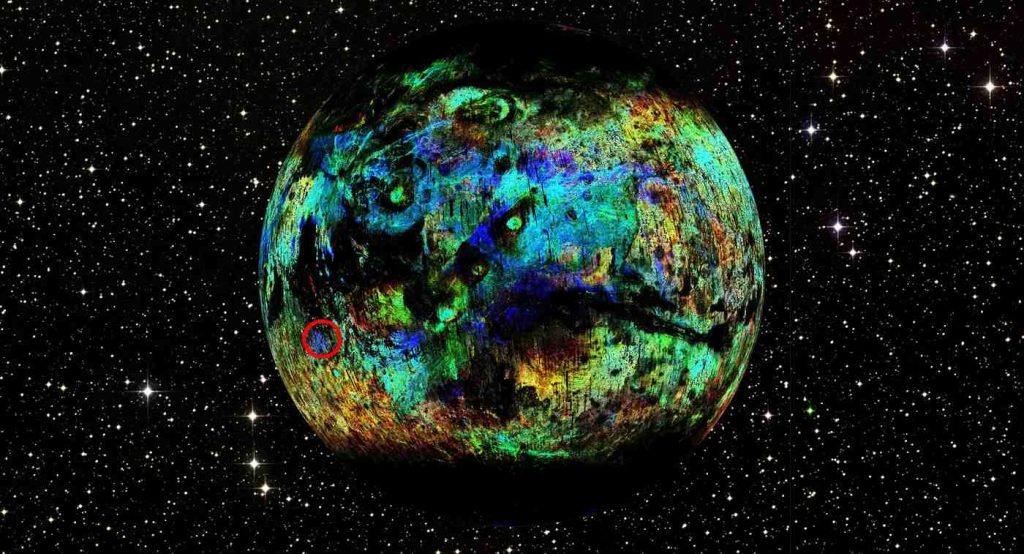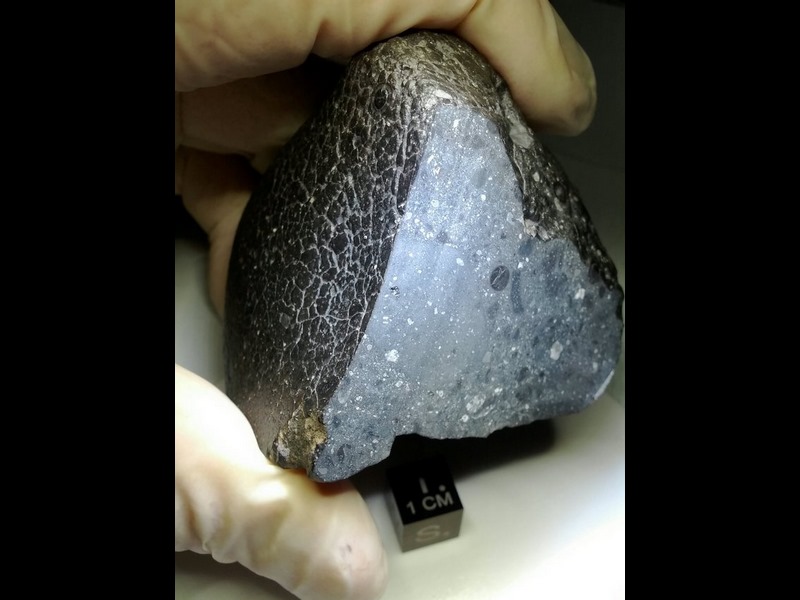
Artificial intelligence has traced the world’s oldest Martian meteorite to the precise crater on the Red Planet where it originated.
Nicknamed “Black Beauty,” it formed almost 4.5 billion years ago and contains more traces of water than any other Martian meteorite, adding to evidence that the planet was once habitable.
The famous space rock, measuring less than two inches long and weighing about 11 ounces, was found in the western Sahara in 2011.
An international research team used a supercomputer to track its creation on the red planet in a region known as Terra Cimmeria-Sirenum. A machine-learning algorithm identified about 90 million impact craters through analyzing thousands of high-resolution images from a range of Mars missions to find Black Beauty’s ejection site.
CHECK OUT: Photo From Mars Curiosity Rover Looks Like We Found a Doorway
When it was attached to Mars it formed part of a primordial crust that hosted oceans of water. Then, a meteorite smashed into Mars and catapulted Black Beauty into the atmosphere on a collision course with the Sahara Desert.

The dust settled
That impact crater has been named Karratha after a city in the Pilbara area of Western Australia renowned as a site of some of the oldest rocks on earth, and according to the International Astronomical Union naming customs that state small impact craters must be named after cities with less than 100,000 in population.
Karratha Crater can be found in the southern hemisphere of the planet, where there are many gullies that could have been carved by flowing rivers. For that, the team wants NASA to priorities the area around Karratha Crater as a future landing site on Mars, as it may contain some of the oldest rocks and sediments on Mars, offering a look into the earliest, potentially wettest, Martian environment.
“For the first time, we know the geological context of [a] Martian sample available on Earth, 10 years before the NASA’s Mars Sample Return mission is set to send back samples collected by the Perseverance rover currently exploring the Jezero crater,” said lead author Dr. Anthony Lagain, of Curtin University, Perth.
“Finding the region where the ‘Black Beauty’ meteorite originates is critical because it contains the oldest Martian fragments ever found, aged at 4.48 billion years old, and it shows similarities between Mars’ very old crust, aged about 4.53 billion years old, and today’s Earth continents.”
The authors explain how the technology will identify the source of other Martian meteorites—and billions of impact craters on Mercury, the Moon, and other bodies. It also paves the way to locate the ejection site of the more than 300 Martian meteorites that have landed on Earth, to assemble the most exhaustive view of the Red Planet’s geological history.
WATCH: Watch a Stunning Solar Eclipse on Mars in Video Captured By NASA’s Perseverance Rover
“We are also adapting the algorithm that was used to pinpoint Black Beauty’s point of ejection from Mars to unlock other secrets from the Moon and Mercury,” said co-author Professor Gretchen Benedix, also from Curtin.
“This will help to unravel their geological history and answer burning questions that will help future investigations of the Solar System such as the Artemis program to send humans on the Moon by the end of the decade or the BepiColombo mission, in orbit around Mercury in 2025.”
SHARE This ‘Impactful’ Story With Your Friends Earthling…




















